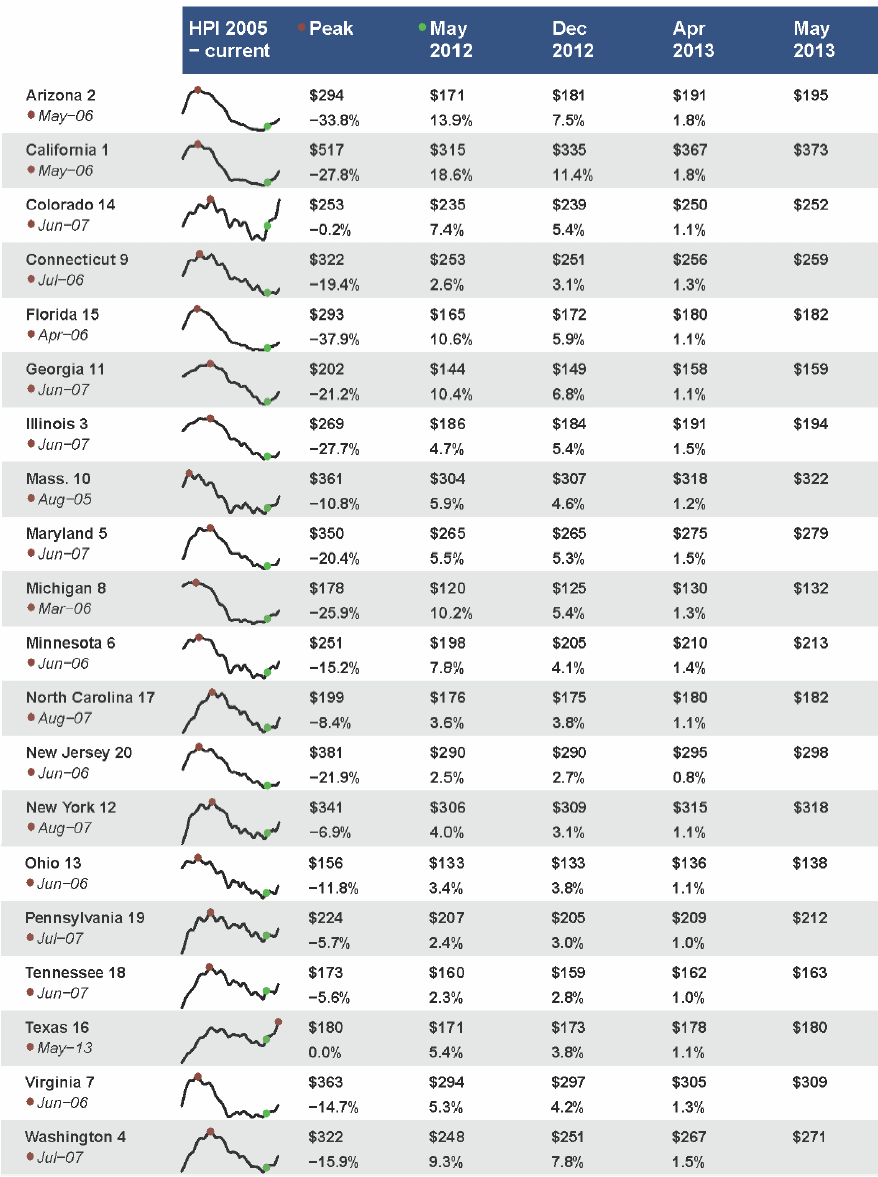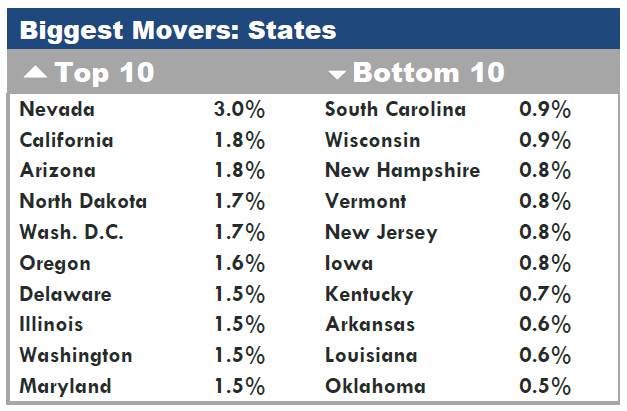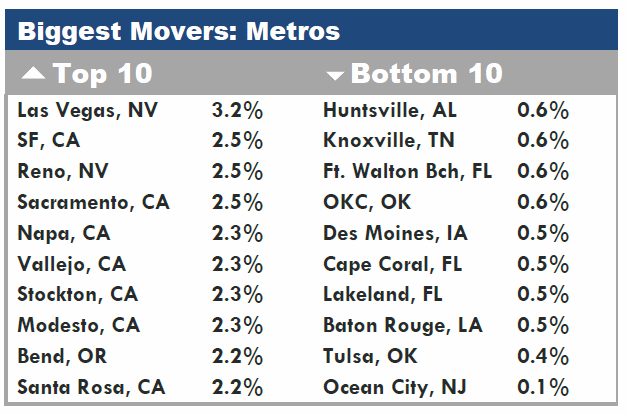May home price rose 1.3 percent nationally on Lender Processing Services (LPS) Home Price Index (HPI) the company said today. The index is now at $226 compared to $223 in April. Year-over-year the May figure is an increase of 7.9 percent compared to $209 in May 2012. The index remains 16.3 percent below the June 2006 national peak of $270. Index figures are expressed in thousands.
The State of Texas along with three of its principal cities (Houston, Austin, Dallas) and the City of Denver, Colorado set new peak HPI levels in May. The Texas HPI was $180, up 5.4 percent from May 2012 when the HPI was $171. In Austin the new index was $234, up 8.4 percent year-over-year and 1.5 percent from April. Dallas and Houston each increased 1.1 percent from April to new peak levels of $179 and were up on an annual basis by 5.4 percent and 6.2 percent respectively. Texas did not have the rapid increases in the mid-2000s that were seen in much of the country and, perhaps as a result had a much more modest "bust" from which to recover.

Denver's new peak HPI is $260, 9.1 percent above the $238 HPI in May 2012. Colorado is within 0.2 percent of its June 2007 peak of $253 with a May HPI of $252.
Nevada had the largest change in its April to May HPI of any state at 3.0 percent with California and Arizona following at 1.8 percent. North Dakota and Washington, D.C. each increased by 1.7 percent. Oklahoma had the smallest increase, 0.5 percent, followed by Arkansas and Louisiana (0.6 percent), Kentucky (0.7 percent), and Iowa, New Jersey, Vermont, and New Hampshire at 0.8 percent.

Metropolitan areas with the largest increases were Las Vegas, up 3.2, followed at 2.5 percent by San Francisco, Rena, and Sacramento. At the bottom was Ocean City, New Jersey at 0.1 percent.

LPS said it had significantly expanded its property tracking with this month's report and now covers about 25 percent more counties, a total of 1,900, and more than 18,500 Zip codes. The HPI is derived through a repeat sales analysis for home prices as of their transactions dates and represents the price of non-distressed sales by taking into account price discounts for bank-owned real estate (REO) and short sales.







